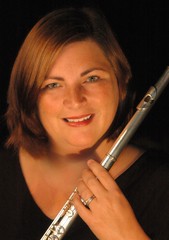Nathan Crites-Herren
The Paw Print
Music and Physics may seem like diametrically opposed fields, but for those who apprehend the underlying concepts of these disciplines it is not hard to recognize that in many ways music and physics create a symbiotic relationship. On Oct. 19, Associate Professor of Physics, Robert J. Astalos, Ph.D. and Music Education Associate Chair, Dr. Tracy A Doyle combined forces to present a uniquely engaging lecture that combined the creative world with the scientific.
The presentation was broken down into two parts, one focusing on the necessary background and introductory principals of physics, and the second focusing on musical theory and history. The physics portion of the lecture presented by Astalos, focused on a basic model of Physics known as wave theory, which is describes the functioning of common musical instruments. The musical oriented part of the lecture focused on the history of tuning musical instruments to create the best sound, namely the practice of equal temperament which is the universal tuning system we use today.

Dr. Tracy Doyle
Creating a base for understanding, Astalos began his intro to basic physics by saying, “Wave lengths are the medium in which we measure music in physics, in fact they are the single most important factor in understanding music through physics.” Using the lenses of physics, music is nothing but varying sound waves that create measurable patterns. Being able to measure these patterned waves of sound depends on knowing that a wavelength moves at a constant velocity which depends on its surroundings.
Key to Astalos’s presentation was the fact that the act of tuning a musical instrument is directly related to physics. He explains that when a tone is reverberated simultaneously with another tone it will create separate wave length patterns that can be graphed. If those patterns do not match up or overlap on the graph then that signifies the tones are not in tune. Basically, if the tones give off a “beating” sound that rises and falls, then those sounds are out of tune.
As Doyle described the musical aspects of physics, she focused on the idea of harmonics and scales which both relate to the frequency of a wave. “Western music has sought to find the harmony of the frequency according to physics, in order to make the best sounding scales possible,” said Doyle. Through the study of frequency, harmonics was discovered which lead to the formation of scales that date back to the early Greek philosophers.

Robert J. Astalos, Ph.D.
No matter how much one can relate music with the scientifically sound practice of physics, there still remains the elusive and intangible aspects of music which make it an art based in creativity. The fact that the 12 musical notes that exist and their corresponding chords have yet to be perfected in a way that allows for equal harmonization, speaks to intangible nature of music and art. “The whole idea of tuning, and especially scales are still in many respects a shade of grey, we still don’t have a definite answer for what is the perfect tune of perfect scale. This is a question that musicians still struggle with today,” said Doyle.
In addition the to the faculty lead presentations, students involved with the music program performed numerous musical pieces which demonstrated the harmony of music and physics. One particular number was purposely played out of tune so the audience could relate to the “beating” sound described by Astalos. Of particular interest was the playing of the massive organ pipes, which were used to show the different frequencies and tones that can be reached when the shape and size of the instruments pipes are changed.
What’s Been Said…